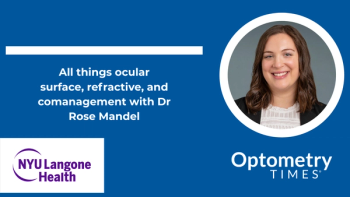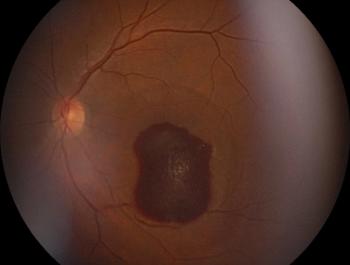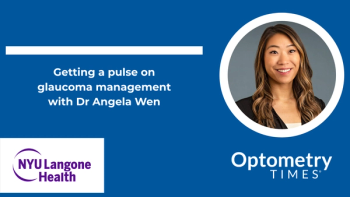
How ODs can ease the pain of patient referrals
Not all situations can be handled within one office, so sometimes it is necessary to refer patients elsewhere. Despite the logic behind them, referrals often come bundled with liabilities that can give any OD a headache.
Not all situations can be handled within one office, so sometimes it is necessary to refer patients elsewhere. Despite the logic behind them, referrals often come bundled with liabilities that can give any OD a headache.
From staking one's reputation on others’ actions, to getting left out of the loop on ongoing patient care, the patient referral process can be painful, says Walter O. Whitley, OD, MBA, FAAO, Optometry Times Editorial Advisory Board member, at the recent SECO meeting.
ODs can change referrals from a chore to regular components of the business. Strategies to do so include a goal of improving communication among healthcare practitioners, along with addressing problems inherent to the referral process.
Related:
ODs need to know how to collaborate effectively with healthcare partners to achieve a higher standard of care for every patient.
Common problems with patient referrals
Although comanaged care can contribute to stronger patient outcomes, there are problems with patient referrals that make healthcare practitioners unwilling to engage in the process:
• A lack of referral letters and poor communication in general
• Increased wait times for the patient
• Returning patients to their clinic of origin
The need for referrals underscores the importance of having strong relationships with fellow ODs and other providers within the healthcare industry. Building a strong network of collaborative care begins with understanding when referrals are necessary to improve patient outcomes, says Dr. Whitley.
Related:
Communicating with healthcare providers
General physicians play an important role in comanaging optometric conditions. However, the collaboration between optometrists and general physicians is historically weak with only a small fraction of in-network physicians referring patients to optometrists for ocular comanagement.
To counter this, Dr. Whitley recommended that optometrists take an active approach to provider communication.
“Go meet, personally visit with, the primary-care doctor, the medical director, whoever runs the clinic, the office manager, and let them know the services that we provide,” he says. “If you want referrals for these types of conditions, you need to go make that introduction.”
Although referrals offer opportunities for improved patient care, expectations must be set before referrals occur. Dr. Whitley says to get to know clinicians in the area to help establish a referral network, and setting clear expectations on referral boundaries with providers.
Related:
Setting these limits early guarantees that both the referring OD and the referred provider understand what is expected of them.
“If [physicians] are sending patients all over the place and not telling you, that’s an issue. Continuous communication is the key to successful co-management,” says Dr. Whitley.
Strategies for addressing patient wait times
Another barrier to patient referrals is patients’ wait times when they visit multiple providers for treatment.
To manage this, providers should inform patients in advanced of the increased wait times they’ll experience. Keeping patients in the loop can help mitigate the frustration they may feel from long wait times at specialty clinics.
Dr. Whitley recommends that providers provide this feedback to each other in the interest of keeping patients happy.
Related:
“I’ll have ODs call me out,” he says. “They’ll say, ‘Walt, what’s wrong with your wait times? You guys are doing something over there that is getting longer and longer,’” he says.
Avoid losing patients during specialist referrals
When patients are sent to other clinics for care, they often find that they can receive comprehensive health management at their new facility-creating challenges for the referring OD.
Dr. Whitley says that the question of what should happen with each patient must be established before the referral process begins.
An exception may be patients being seen for chronic retinal concerns that require regular treatments at a specialty clinic. Dr. Whitley says that even in these situations, documentation for the referring OD should always be a priority.
“One of the things they should always do is make sure that they’re documenting-follow-up with your optometrist for your comprehensive eye exam,” he says.
Best communication practices
Dr. Whitley says both the referring OD and the referred physician must have clear and consistent communication.
“Communication is a two-way street,” he says.
Related:
Among the multitude of channels through which healthcare professionals can communicate, several channels may be necessary no matter what problems the patient may face. With communication being a primary challenge for referrals, any information is helpful.
“Just send something,” he says.
Dr. Whitley first noted referral forms, including data sent through electronic medical records. Other forms of communication include pertinent patient notes, previous post-ops, and HIPAA-compliant emails and texts. Above all, clarity should be the goal with each communication, he says.
Education and consistent communication are key
ODs must set the stage for a quality patient experience. This begins with educating patients and providing them with all available options. Doing so ensures patients are informed about their healthcare options when, and if, their information needs to be shared across a referral network of healthcare specialists.
Related:
“We know that successful co-management is the result of continuous communication,” he says.
Dr. Whitley says that this education is a critical part of co-management-along with consistent channels of communication that keep providers informed.
Newsletter
Want more insights like this? Subscribe to Optometry Times and get clinical pearls and practice tips delivered straight to your inbox.



















































.png)


